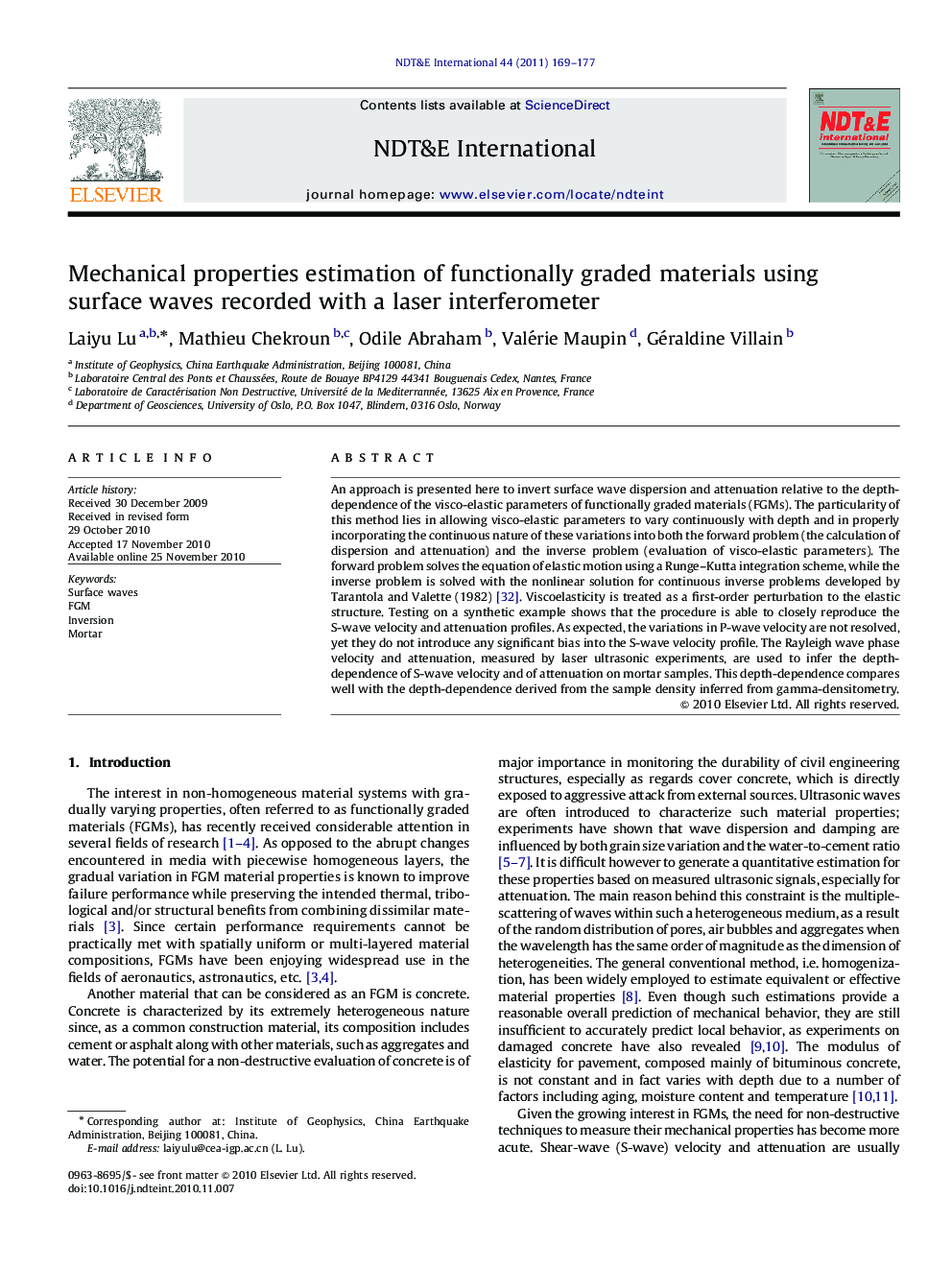| Article ID | Journal | Published Year | Pages | File Type |
|---|---|---|---|---|
| 295482 | NDT & E International | 2011 | 9 Pages |
An approach is presented here to invert surface wave dispersion and attenuation relative to the depth-dependence of the visco-elastic parameters of functionally graded materials (FGMs). The particularity of this method lies in allowing visco-elastic parameters to vary continuously with depth and in properly incorporating the continuous nature of these variations into both the forward problem (the calculation of dispersion and attenuation) and the inverse problem (evaluation of visco-elastic parameters). The forward problem solves the equation of elastic motion using a Runge–Kutta integration scheme, while the inverse problem is solved with the nonlinear solution for continuous inverse problems developed by Tarantola and Valette (1982) [32]. Viscoelasticity is treated as a first-order perturbation to the elastic structure. Testing on a synthetic example shows that the procedure is able to closely reproduce the S-wave velocity and attenuation profiles. As expected, the variations in P-wave velocity are not resolved, yet they do not introduce any significant bias into the S-wave velocity profile. The Rayleigh wave phase velocity and attenuation, measured by laser ultrasonic experiments, are used to infer the depth-dependence of S-wave velocity and of attenuation on mortar samples. This depth-dependence compares well with the depth-dependence derived from the sample density inferred from gamma-densitometry.
